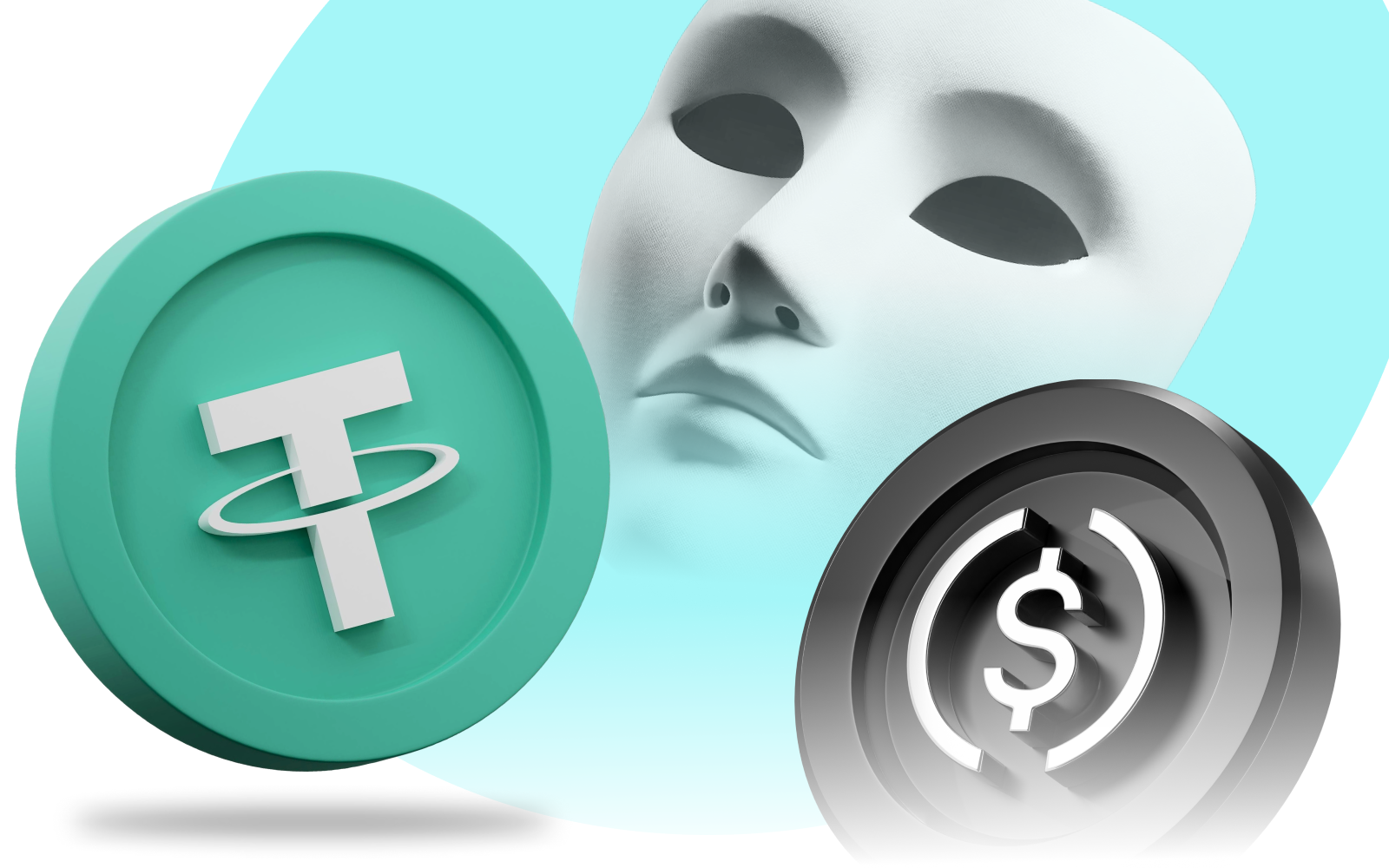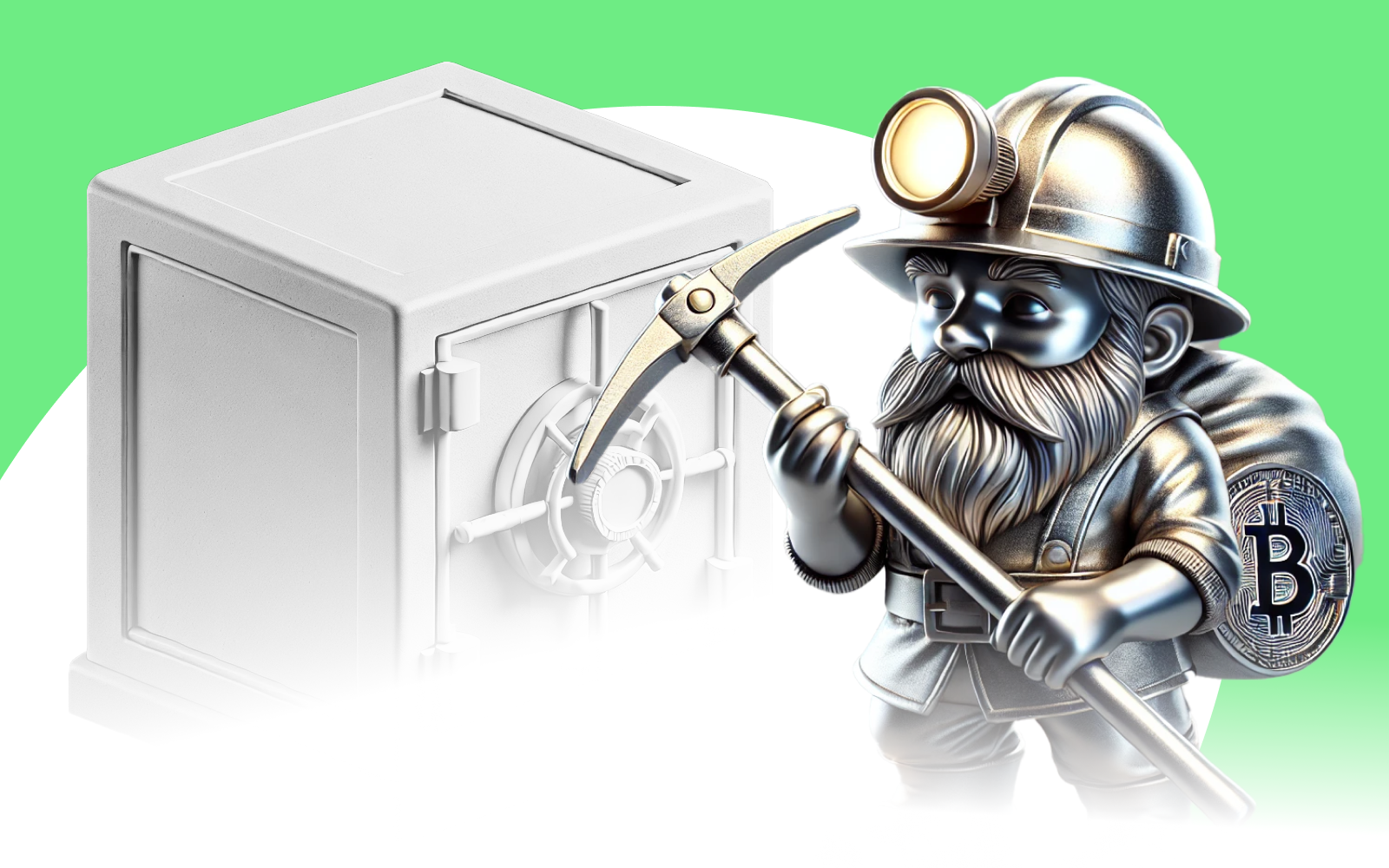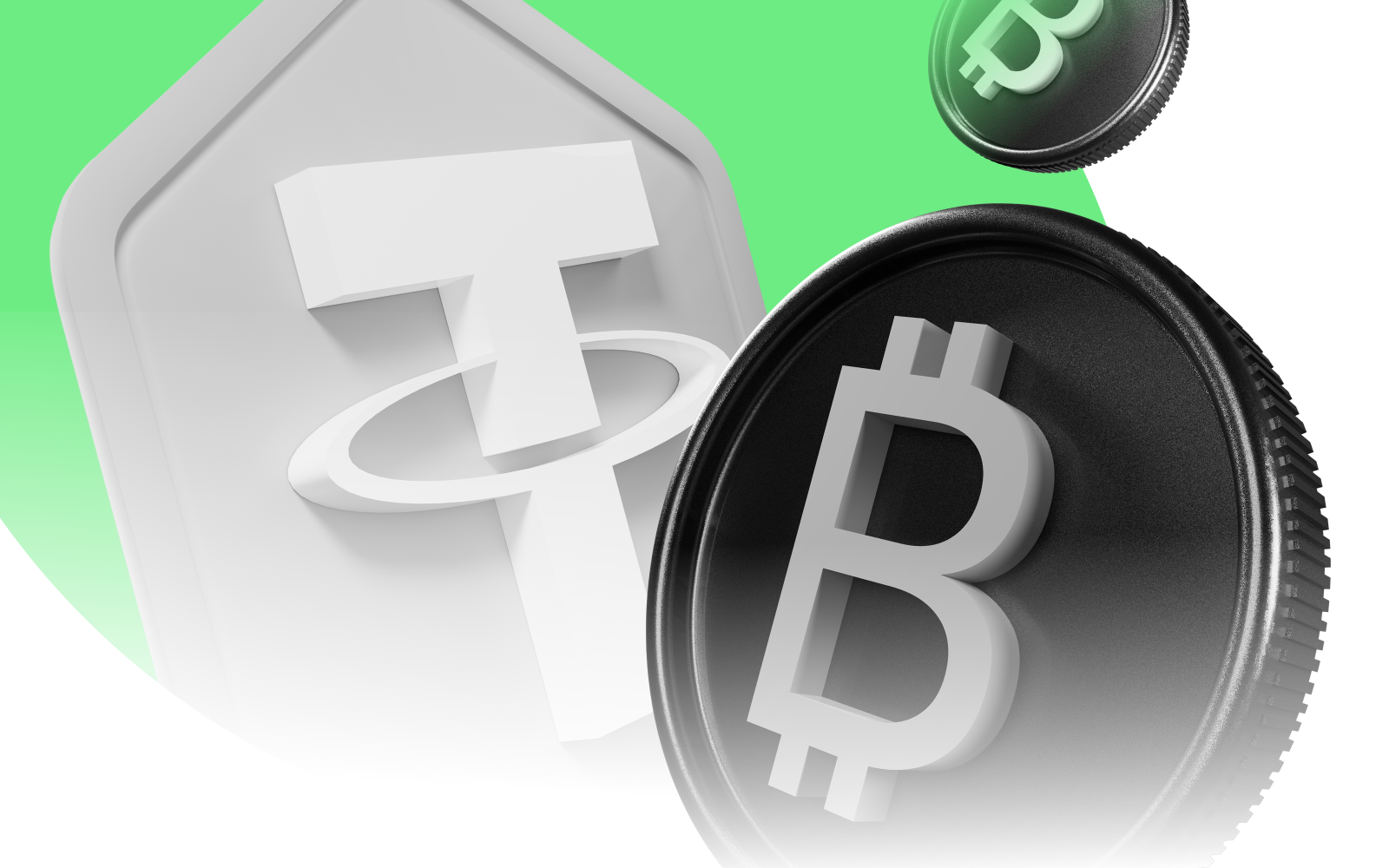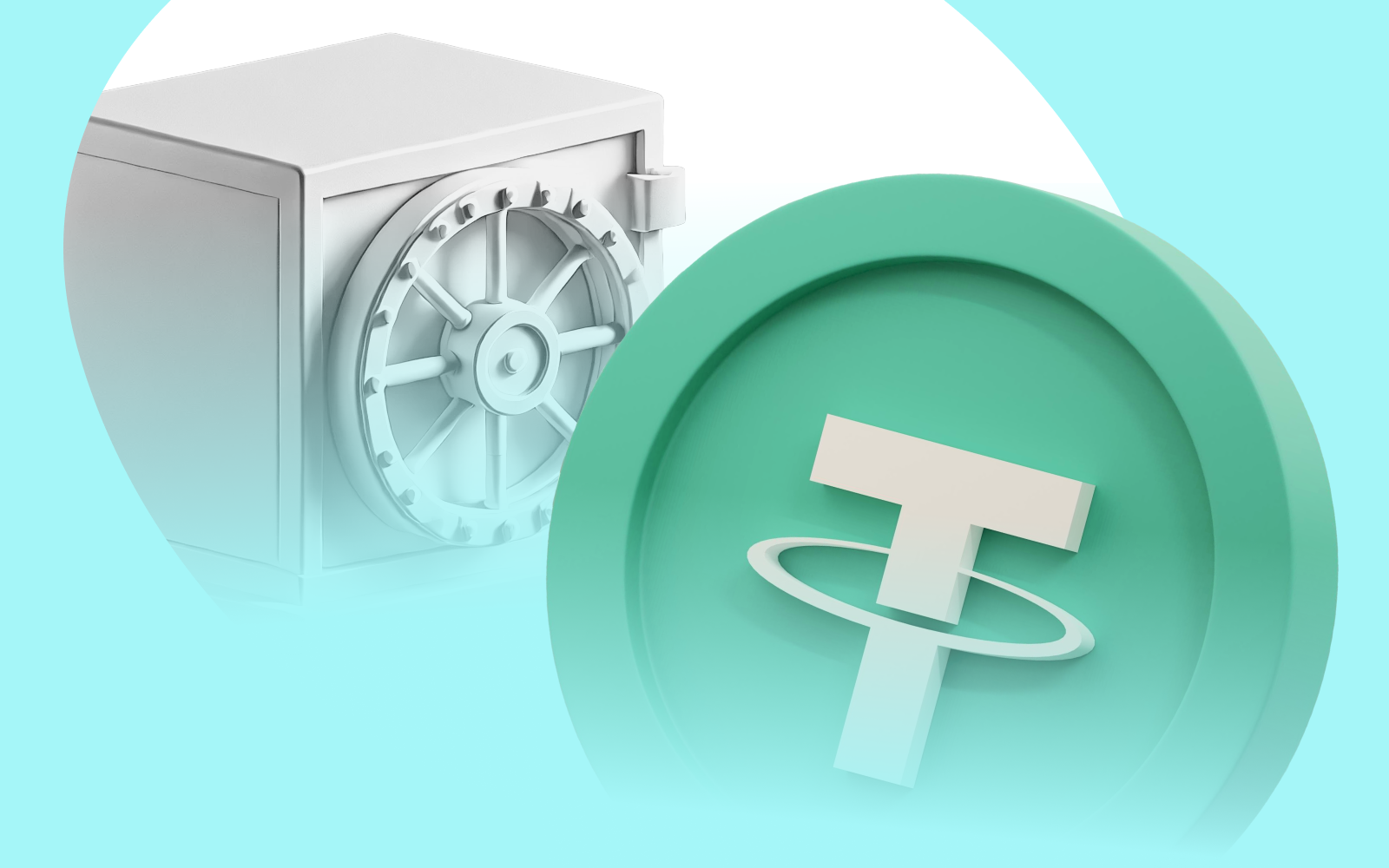
Introduction
When exploring the difference between USDC and USDT, the stablecoin giants, pegged to the US dollar, get into their roles in reshaping digital finance. With a combined $170 billion+ market cap, stables bridge traditional and crypto finance, powering DeFi and cross-border transactions. These complementary forces build the financial world of tomorrow, driving innovation and adoption in the crypto frontier. It is not about the USDT vs. USDS confrontation; it is about collaborative creation and shaping the future of money.
The Stablecoin Showdown
The $161.2 billion stablecoin market in 2024 is dominated by two giants: USDT and USDC. Understanding the USDT vs USDC dynamic is crucial for navigating this landscape. We already explored some of USDT historical perspective, but it is time to compare it to USDC, introduced in 2018, which holds ~21% of the market as per mid of October `24.
-1480x900.png)
USDT's daily trading volume exceeds $50 billion, accounting for about half of all Bitcoin trades. Its first-mover advantage established dominance, particularly in Asian markets. When considering USDT to USDC conversions, this volume difference is a key factor.
USDC, backed by crypto heavyweights Circle and Coinbase, saw 400% growth in 2020-2021, gaining traction with US institutions and regulators. Choosing between these stables often depends on specific use cases and regulatory considerations.
The 2021 crypto boom highlighted the crucial role of stablecoins, with USDC and USDT at the forefront. Together, they've fostered mass adoption by stabilizing the crypto market:
- Companies collaborate to support the industry's growth, offering users diverse options for trading, savings, and cross-border transactions. Their combined presence has enhanced liquidity across exchanges and DeFi platforms, creating a more robust and accessible crypto ecosystem.
- As regulatory scrutiny intensifies, USDC and USDT adapt and innovate, collectively pushing for more transparent frameworks that could benefit the entire industry.
- Stables' parallel evolution demonstrates how different approaches to compliance and transparency coexist, providing users and institutions with choices that best fit their needs while collectively strengthening the foundation of the digital asset space.

To know more about stablecoins, check the article
Beyond the Peg: Dissecting USDC and USDT
Examining the difference between USDT and USDC, it's essential to look beyond their 1:1 USD peg. In the high-stakes poker game of crypto, USDC and USDT aren't just chips—they're the house. A detailed comparison table at the section's end lays bare their stats, but the real story lies in the nuances.
-1480x1700.png)
USDT's launch addressed early crypto volatility, prioritizing trading pairs and liquidity. By contrast, USDC's debut amid growing institutional interest focused on compliance and transparency.
The difference between USDC and USDT is evident in their origins and development trajectories: USDT expanded aggressively across blockchains, dominating trading and Asian markets. USDC prioritized regulatory compliance, attracting institutions and DeFi protocols. USDT became the liquidity king, while USDC emerged as the compliance leader. Their strategies reflect contrasting visions for stablecoins in crypto's future.
Technologically, both stablecoins have evolved beyond their original blockchains. When comparing USDC vs USDT fees, it's noteworthy that USDT operates across 16 networks, with half its supply on Tron for lower fees, aligning with its dominance in B2C transactions and retail use. USDC supports 15 blockchains, focusing on Ethereum and emerging Layer 2 solutions, catering to B2B and institutional needs. Both use standard token protocols like ERC-20 on Ethereum, actively expanding cross-chain capabilities. USDT leads in multi-chain adoption, while USDC's emphasis on regulatory compliance makes it preferred for institutional transactions. This technological diversity reflects their complementary roles: USDT excels in high-volume, low-value transactions, while USDC is favored for complex, high-value operations requiring advanced programmability. A salary offer in USDC might even signal a company's regulatory focus and credibility.
The Ecosystem Impact of USDC vs USDT
DefiLama data reveals USDT and USDC dominance across blockchains::
Ethereum: $84.869 billion stablecoin cap, USDT 55.49% share.
Tron: $60.184 billion cap, USDT 98.26% dominance.
Binance Smart Chain: $5.014 billion cap, USDT 79.39% share.
Arbitrum: $4.433 billion cap, USDT 63.67% share.
Base: $3.758 billion cap, USDC dominates at 92.69%.
-1480x1008.png)
The usdc vs usdt price stability is crucial for their roles in various ecosystems. USDT leads on most chains, while USDC shows strength in specific networks like Base.
Corporate treasuries increasingly opt for USDC, drawn by its regulatory clarity and transparent reserves. Tesla's $1.5 billion crypto investment notably included USDC, signaling growing corporate trust. USDT, despite regulatory challenges, remains the liquidity backbone for many crypto-native institutions. In the settlement layer battle, USDC is making significant inroads with payment processors like Visa, leveraging its compliance-first approach.
Global money movement showcases the stablecoins' complementary strengths. USDT dominates remittance corridors in emerging markets, and its widespread acceptance facilitates rapid, low-cost transfers. USDC, while less prevalent in peer-to-peer remittances, is gaining traction in formal cross-border trade, where its regulatory standing provides an edge. Both stablecoins in dollarized economies like Venezuela and Lebanon serve as crucial dollar proxies, offering financial stability amidst local currency volatility.
The Ripple Effect: Broader Implications
Regulatory Chessboard: Navigating Global Compliance
USDC and USDT employ contrasting strategies.
USDC embraces a proactive compliance approach, aligning closely with U.S. regulatory standards. This strategy has earned USDC favor in regulated markets.
USDT, maintaining a more global stance, faces increased scrutiny. Notably, in Europe, USDT confronts a critical challenge with the new Markets in Crypto-Assets (MiCA) regulation. MiCA recognizes only stablecoins issued by authorized e-money entities, a status Tether currently lacks. Non-compliance by December 30, 2024, could result in USDT's delisting from EU exchanges. Tether's CEO, Paolo Ardoino, has confirmed efforts to develop a compliance solution by November 2024, highlighting the high stakes in regulatory adaptation.
Market Dynamics: Unraveling Transaction Volumes
Recent findings have shed new light on stablecoin usage patterns. A 2024 analysis co-developed by Visa and data platform Allium Labs revealed that over 90% of stablecoin transaction volumes may not originate from genuine users. Out of approximately $2.2 trillion in total transactions in April, merely $149 billion stemmed from "organic payments activity."
Despite the low percentage of organic transactions, the analysis found a steady growth in monthly active stablecoin users, reaching 27.5 million across all chains. This paradox of high volume but low organic usage complicates the narrative around stablecoin adoption and utility.
Market Dominance and Manipulation Concerns
Both stablecoins dominate 69% (USDT) and 21% (USDC) of the $172 billion stablecoin market, including other stables–DAI, USDe, etc.–as of 10/19/24. USDT's prominence in Bitcoin trading pairs, accounting for over 70% of BTC/stablecoin volume on major exchanges, has long fueled debates about market influence. A 2020 study by TokenAnalyst found correlations between USDT issuances and Bitcoin price movements, further intensifying these discussions.
However, as Visa's Head of Crypto Cuy Sheffield noted, blockchains are general-purpose networks where stablecoins can be used across various use cases, including programmatically through bots. This complexity makes it challenging to draw definitive conclusions about market manipulation based solely on transaction volumes.
USDT's Resilience: Defying Predictions
Despite facing numerous challenges and predictions of its demise since 2017, USDT has demonstrated remarkable resilience. Critics have repeatedly forecasted USDT's collapse due to regulatory concerns, transparency issues, and market manipulation allegations. However, USDT not only survives but continues to dominate the stablecoin market.
Technological Arms Race: Pushing Innovation Boundaries
Both stablecoins are driving technological innovation. USDC's focus on Ethereum Layer 2 solutions aims to address scalability issues, with transactions on Polygon reaching 10,000 TPS in recent tests. USDT's multi-chain approach has accelerated cross-chain interoperability developments, supporting transactions on 16 blockchains.
Broader Implications: Shaping the Crypto Landscape
The USDC-USDT dynamic, coupled with new insights into transaction patterns, underscores the complexity of the stablecoin ecosystem. It highlights the challenges in accurately assessing genuine adoption and usage, pointing to the need for more sophisticated analysis of blockchain data to understand actual market dynamics.
The competition USDC vs USDT continues to be a driving force in the industry's maturation, with each development rippling through the entire crypto ecosystem. Their ongoing evolution and adaptation to regulatory, market, and technological challenges will likely shape the future of stablecoins and the broader cryptocurrency landscape.
The Crystal Ball: Future Scenarios
CBDC Impact: 80% of central banks exploring digital currencies (BIS, 2023). US Federal Reserve's potential digital dollar could reshape the stablecoin landscape. USDC's regulatory compliance positions it for potential CBDC integration. USDT's global reach might challenge CBDC adoption in emerging markets.
Market Cap Shifts: USDC grew 100% in 2022, outpacing USDT's 20% growth. Analysts project USDC overtaking USDT by 2025 if regulatory trends continue (Messari, 2023). USDT's first-mover advantage in Asia remains a significant barrier.
Tether's Diversification: On April 29, 2024, Tether announced a $200 million investment in Blackrock Neurotech through its new venture division, Tether Evo. This move into brain-computer interface (BCI) technology marks a significant diversification for the stablecoin issuer. Tether's expansion into data, education, and power sectors signals a broader strategy beyond stablecoins, potentially reshaping USDT's market position and utility.
Wild Cards:
- Algorithmic stablecoins: Despite Terra's collapse, projects like Frax (50% collateralized) gained 200% users in 2023.
- Quantum computing: IBM predicts quantum computers could break current crypto encryption by 2030, necessitating new security models for stablecoins.
- DeFi 2.0: Emerging protocols focusing on real-world assets could favor USDC's regulatory stance, potentially shifting $50B in liquidity by 2026.
- Tech Convergence: Tether's investment in BCI technology could lead to novel applications combining stablecoins with neurotechnology, potentially opening new use cases in healthcare and human-computer interaction.
USDC and USDT's future hinges on regulatory developments, technological advancements, and evolving market preferences. Tether's bold move into neurotechnology underscores the expanding horizons for stablecoin issuers, potentially redefining their role in the broader technology landscape.






